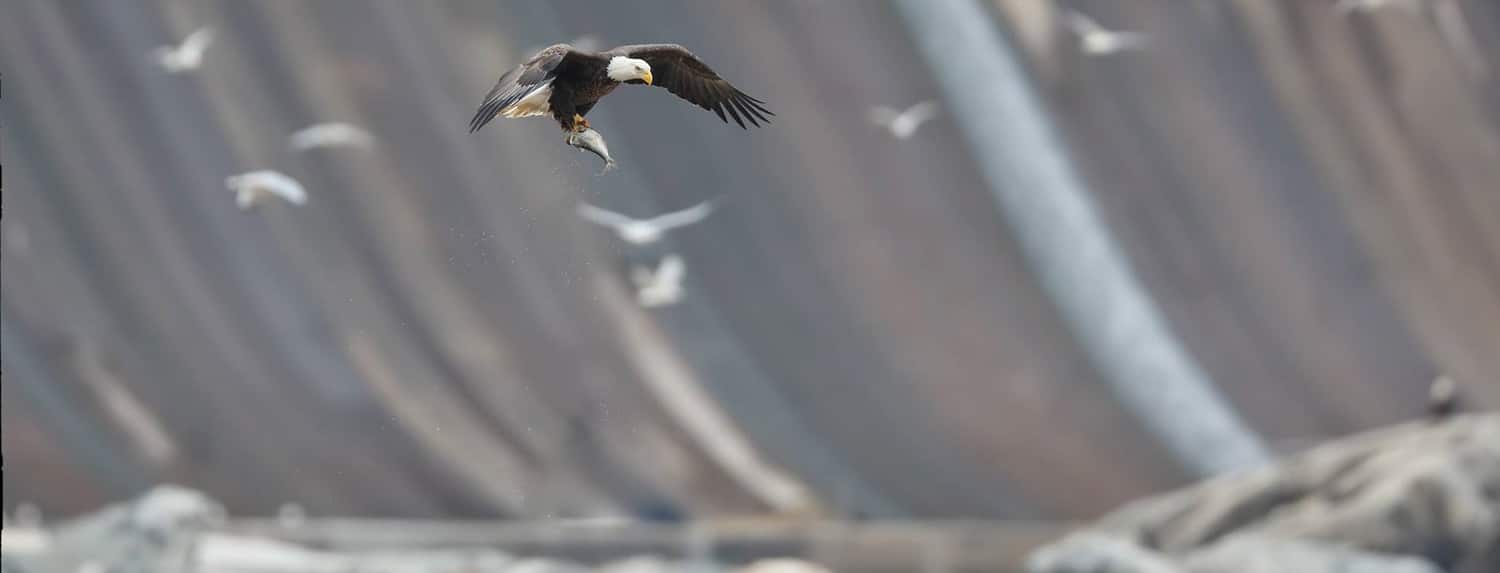A favorite challenge for many birders is a hawk watch in the spring or fall. But you don’t have to go to Hawk Mountain, PA. or Cape May, NJ, two famous sites, to watch the fall hawk migration. Indeed, many hawk watch sites in Maryland could use you as a volunteer to help fill out a hawk-watching schedule. Watches take place in the spring and fall at many sites, while others are limited to only one season due to the geography of the area. The results are compiled and sent to the Hawk Migration Association of North America. Become part of a significant data gathering effort and begin to learn the techniques of hawk identification from experts.
Read about one popular site, Fort Smallwood Park, in Anne Arundel County.
About Fort Smallwood Park
Fort Smallwood Park Is a nationally significant spring hawkwatch site and the most prominent along the entire East Coast. The number of raptors counted in a spring season ranges from 9,000 to 12,500, and fifteen different raptor species are usually observed.
The most common migrants are Sharp-shinned, Cooper’s, Broad-winged, Red-tailed, and Red-shouldered Hawks, and Ospreys, American Kestrels and Turkey Vultures. Also seen regularly are Bald Eagles, Northern Harriers, Merlins, and Black Vultures. Mississippi Kite, an uncommon southern visitor, is a late spring specialty.
Mid-March through mid-May is the best time period to View the bulk of the spring migration, and southwest winds tend to be the most productive. Volunteer counters are present during most of these days. Although there is no official fall count, days in September through November with northwest winds can be fruitful for fall migrants.
In recognition of the significance of the hawkwatch, Fort Smallwood Park has been named an important Bird Area by Audubon Maryland-DC. Migration of non-raptor species is also noteworthy, especially waterfowl, swallows, and Blue Jays and other passerines. in the neighborhood of 260 species of birds have been observed at the Park.
More detailed information on the raptor migration can be found at the online data entry website, www.hawkcount.org, and specifically the Fort Smallwood section. You will see aerial and schematic maps of the Park, charts containing count highlights and migration time intervals for each raptor species, and more. The link: “[Latest count data] ” just above the Google Earth map, and several tabs will enable you to view any daily counts recorded from 1987 through the present, and species trend graphs.
For general Park Information, click here.
Fort Smallwood Count Summaries

